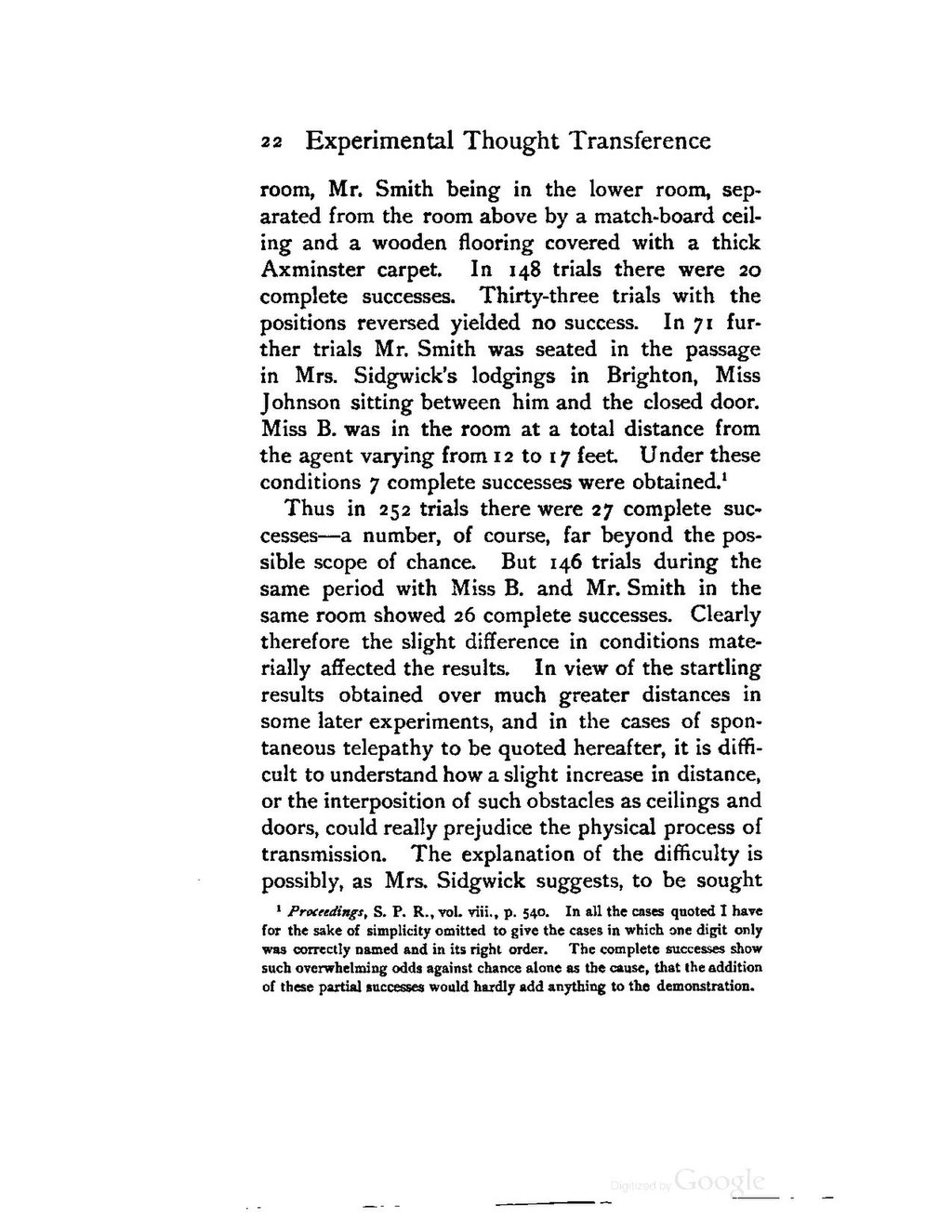room, Mr. Smith being the lower room, separated from the room above by a match-board ceiling and a wooden flooring covered with a thick Axminster carpet. In 148 trials there were 20 complete successes. Thirty-three trials with the positions reversed yielded no success. In 71 further trials Mr. Smith was seated in the passage in Mrs. Sidgwick's lodgings in Brighton, Miss Johnson sitting between him and the closed door. Miss B. was in the room at a total distance from the agent varying from 12 to 17 feet. Under these conditions 7 complete successes were obtained.[1]
Thus in 252 trials there were 27 complete successes—a number, of course, far beyond the possible scope of chance. But 146 trials during the same period with Miss B. and Mr. Smith in the same room showed 26 complete successes. Clearly therefore the slight difference in conditions materially affected the results. In view of the startling results obtained over much greater distances in some later experiments, and in the cases of spontaneous telepathy to be quoted hereafter, it is difficult to understand how a slight increase in distance, or the interposition of such obstacles as ceilings and doors, could really prejudice the physical process of transmission. The explanation of the difficulty is possibly, as Mrs. Sidgwick suggests, to be sought
- ↑ Proceedings, S. P. R., vol. viii., p. 540. In all the cases quoted I have for the sake of simplicity omitted to give the cases in which one digit only was correctly named and in its right order. The complete successes show such overwhelming odds against chance alone as the cause, that the addition of these partial successes would hardly add anything to the demonstration.
